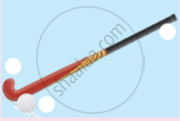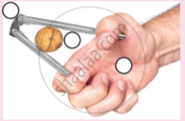Advertisements
Advertisements
प्रश्न
State three differences between the three classes of levers.
अंतर स्पष्ट करें
उत्तर
| Class I | Class II | Class III | |
| 1. | It has the fulcrum between the load and effort. | It has the load between the fulcrum and effort. | It has an effort between the fulcrum and the load. |
| 2. | The effort arm can be shorter, equal to or longer than the load arm. | The effort arm is bigger than the load arm. | The effort arm is always shorter than the load arm. |
| 3. | The mechanical advantage can be less than, equal to, or greater than 1. | The mechanical advantages are always greater than 1. | The mechanical advantages are always less than 1. |
| 4. | The load and effort are in the same direction. | The load and effort are in opposite directions. | The load and effort are in opposite directions. |
shaalaa.com
क्या इस प्रश्न या उत्तर में कोई त्रुटि है?
APPEARS IN
संबंधित प्रश्न
State whether the following statement is True or False.
All levers are force multipliers.
Which class of lever has the mechanical advantage always more than 1? Give an example.
Name the class to which the following lever belong:
a lemon squeezer
Name the class to which the following lever belong:
a crowbar
How does the friction at the fulcrum affect the mechanical advantage of the lever?
Draw a labelled diagram of a class II lever. Give one example of such a lever.
Classify the following into levers:
A door
The diagram below shows a rod lifting a stone.
- Mark position of fulcrum F and draw arrows to show the directions of load L and effort E.
- What class of lever is the rod?
- Give one more example of the same class of lever stated in part (b).

Name the load, effort, and fulcrum.
 |
 |
 |
|
1. ______ 2. ______ 3. ______ |
1. ______ 2. ______ 3. ______ |
1. ______ 2. ______ 3. ______ |
Match the following:
| 1. | Class I lever | a. | Wheelbarrow |
| 2. | Class II lever | b. | Seesaw |
| 3. | Class III lever | c. | Axe |
| 4. | Wedge | d. | Hockey sick |
